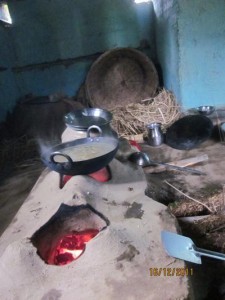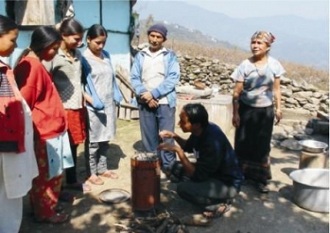Source: May 29, 2012, ScienceCodex
CHAMPAIGN, Ill. — The smoke rising from a cookstove fills the air with the tantalizing aroma of dinner – and a cloud of pollutants and particles that threaten both health and the environment. How families in developing countries use their cookstoves has a big effect on emissions from those stoves, and laboratory emission tests don’t accurately reflect real-world operations, according to a study by University of Illinois researchers.

In many developing countries, food is cooked over traditional biomass-burning cookstoves. Illinois researchers found that how users operate their stoves has a big effect on emissions. (Photo Credit: Cheryl Wayant)
Biomass-burning cookstoves are used throughout the developing world, using wood, agricultural waste and other organic matter as fuel. They are also a major cause of poor air quality in the regions where use is prevalent. Policymakers and nonprofit organizations are working to develop and distribute “improved” cookstoves, for example, adding insulation or chimneys to reduce emissions. They are especially concerned with fine particles that are emitted, which cause health problems and also affect climate.
Much like automobiles undergo emission testing before hitting the market, cookstoves are tested in the lab before distribution to gauge how effective improvements are at reducing emissions. But if the conditions aren’t the same as how people use them at home, then the changes that designers make to the stove may not actually reduce emissions in the field.
“The understanding of how people really use combustion devices is important if we’re going to optimize that device,” said study leader Tami Bond, a professor of civil and environmental engineering at U. of I. “In the laboratory, where tests are conducted by trained people, there’s a lot more attention to operating the stove carefully. At home, people are not as concerned with its operation; they’re more concerned with making a meal. So they operate in ways that are non-optimal.”
However, these variations in use are masked by the current methods of testing, which use only average values to determine emissions – sort of like a snapshot of the stove in operation, not accounting for variation in use. Bond’s team developed a real-time analysis technique called Patterns of Real-Time Emissions Data (PaRTED) that allows researchers to compare emissions under different operating conditions and to measure how often a stove operates under certain conditions in the field.



